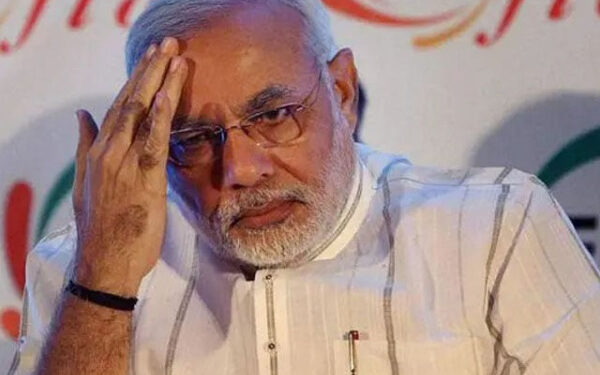New Delhi – Alarming statistics and recurring reports of gender-based violence have once again thrust India into the global spotlight for all the wrong reasons. The recent rape of a French tourist in Udaipur, Rajasthan, on June 22, has reignited international criticism, with many labeling India the “most unsafe country for women.” The growing frequency of sexual violence has also sparked renewed outrage at home, with the Indian opposition and human rights activists accusing Prime Minister Narendra Modi’s government of systemic failure to protect women.
A Growing Crisis: Spike in Sexual Crimes Against Women
India has witnessed a disturbing surge in sexual crimes over the past decade, with many experts blaming deep-rooted societal issues and systemic negligence. According to the National Crime Records Bureau (NCRB), over 31,000 cases of rape were reported in 2023 alone. That equates to nearly 85 rapes per day — and this figure only reflects reported cases, as countless more go unreported due to social stigma and police inaction.
While gender-based violence has long been an issue in India, critics argue that the frequency and brutality of such incidents have escalated under the Modi administration, which they accuse of not prioritizing women’s safety. The latest case in Rajasthan has become symbolic of this broader failure.
Udaipur Incident Sparks Global Outrage
The Udaipur case involves a French tourist who was reportedly raped by a local employee of a travel company on June 22. The victim had arrived in India as a solo traveler, a journey that ended in trauma. Indian police have arrested the suspect, but the case has attracted widespread international attention, with human rights organizations and foreign media outlets condemning the incident.
The Hindu, a prominent Indian newspaper, noted that this case has further damaged India’s global image and tourism sector. Reports in international media — including The Guardian, Le Monde, and The New York Times — have criticized the Indian government’s inability to ensure safety for female tourists and citizens alike.
Opposition Slams Modi Government’s Inaction
India’s opposition parties were quick to seize on the incident as evidence of the ruling Bharatiya Janata Party (BJP)’s failure to safeguard women. Senior Congress leader Priyanka Gandhi posted on X (formerly Twitter), “Women in India are not safe — not in homes, not in workplaces, not in public spaces. The justice system has been weakened and the state is merely watching.”
Opposition leaders argue that law enforcement agencies are often sluggish in responding to complaints of sexual violence, particularly when victims belong to marginalized communities. In many cases, police are accused of discouraging victims from registering complaints to artificially lower crime statistics.
Human Rights Groups Sound Alarm Bells
Global human rights watchdogs, including Amnesty International and Human Rights Watch, have raised concerns about the worsening climate for women in India. In a recent report, Amnesty International described India as having a “toxic environment for women,” citing not just high rape rates but also rising cases of harassment, acid attacks, and domestic violence.
Many critics are also pointing to a weakening of institutional safeguards. For instance, fast-track courts — once hailed as a step forward for delivering swift justice in sexual assault cases — have reportedly become overburdened and under-resourced, with cases taking years to resolve.
“Rape Capital of the World”: A Damaging Label
India has long struggled with its global image on gender safety. However, the consistent and brutal nature of crimes against women has now led international outlets to brand the country as the “Rape Capital of the World.” This phrase, though controversial, underscores the level of concern felt globally.
Foreign embassies have occasionally issued travel advisories for women tourists traveling to India. Several high-profile cases in recent years — including the 2012 Delhi gang rape and the 2018 Kathua rape case — have created a perception that India is unsafe for women, both domestic and foreign.
High-Profile Cases and Their Lasting Impact
The 2012 Delhi gang rape of a 23-year-old medical student, who later died from her injuries, triggered massive protests across India and led to changes in the law, including harsher penalties for rapists. However, critics say that legislative changes alone are insufficient without proper implementation.
In 2018, the gang rape and murder of an eight-year-old girl in Jammu and Kashmir’s Kathua district further highlighted how communal and political biases can influence investigations and delay justice.
These cases, and many others like them, reveal a troubling pattern: public outrage followed by temporary reform, but little long-term change.
Lack of Political Will and Cultural Reform
Analysts argue that the root causes of violence against women in India are both cultural and institutional. Patriarchal mindsets, gender inequality, and victim-blaming attitudes persist across all levels of society — from families to law enforcement agencies. In many cases, the media and political leaders themselves contribute to the problem by trivializing or politicizing crimes.
Furthermore, the underrepresentation of women in political leadership, police forces, and judiciary exacerbates the issue. In some Indian states, less than 10% of police personnel are female, which deters many women from reporting sexual crimes.
What Needs to Change?
Experts suggest a multi-pronged approach to address the crisis:
- Strengthening Law Enforcement: Increase police training, hire more female officers, and ensure sensitivity in handling gender-based crime.
- Speedy Justice: Empower fast-track courts with more resources to avoid delays.
- Education and Awareness: Nationwide campaigns to change public attitudes toward women and challenge patriarchal norms.
- Government Accountability: Hold political leaders and institutions accountable when lapses occur.
Most importantly, Indian authorities must acknowledge the scale of the crisis instead of downplaying it or viewing criticism as an attack on national pride.
Tourism Industry Also Feels the Impact
The ripple effect of such crimes is being felt beyond India’s borders. The tourism sector, which contributes over $200 billion annually to India’s economy, is experiencing a trust deficit. Travel platforms are flooded with concerned reviews, and solo female travelers often express hesitation when planning visits to India.
International travel blogs, social media influencers, and vlogs frequently issue safety tips for women traveling to India — some even discouraging such travel altogether.
Conclusion: A Nation at a Crossroads
India, a country with rich cultural heritage and economic aspirations, finds itself at a crossroads. The increasing number of crimes against women and the lack of effective response from the state are drawing global condemnation. If the Modi government fails to take urgent and meaningful action, the country risks not only its international image but also the safety, dignity, and future of half its population.
Gender-based violence is not an issue that can be solved overnight, but without honest introspection and political commitment, India will continue to be viewed — rightly or wrongly — as one of the most unsafe places in the world for women.

























